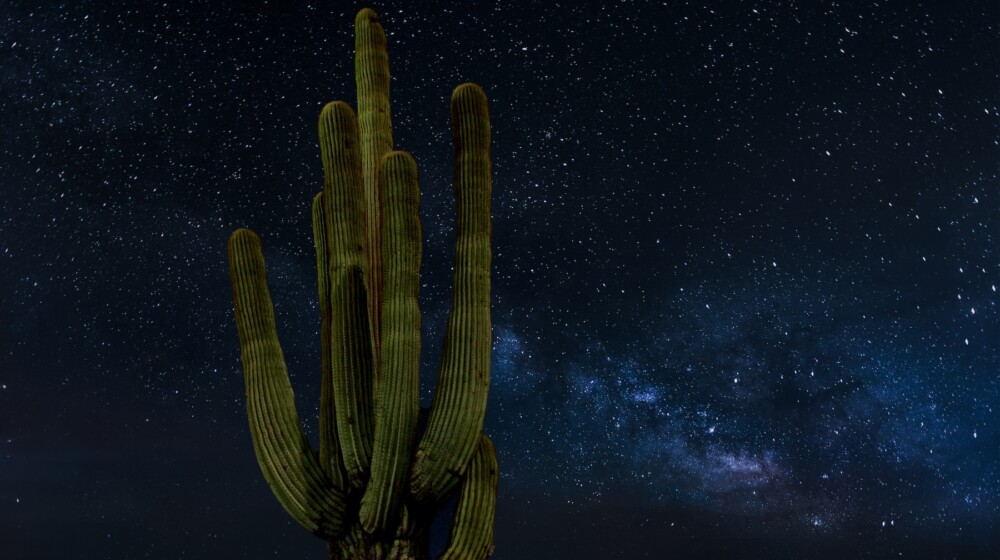Arizona’s Astronomical Heritage
Posted April 1, 2024
Written by Kari Carlisle, Executive Director
For a printable version of this article, please click here.
Did you know…
Arizona’s rich history and diverse landscape have provided a backdrop for centuries of astronomical exploration and observation. From ancient civilizations to modern research institutions, the state’s skies have inspired wonder and curiosity among those who gaze upward. Let’s journey through time to uncover the fascinating story of astronomy in Arizona.
Prehistoric Observatories in the Phoenix Area
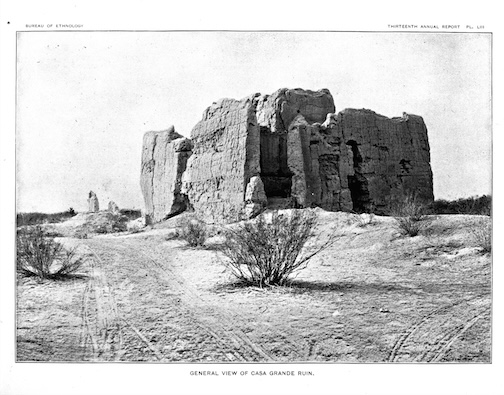
Casa Grande from the northeast, circa 1890. Courtesy of the National Park Service.
Long before the advent of telescopes and modern observatories, ancient peoples in Arizona looked to the heavens for guidance, inspiration, and understanding. Prehistoric sites scattered throughout the state offer glimpses into early civilizations’ astronomical knowledge and practices.
Casa Grande Ruins National Monument, south of Phoenix, features the remains of the “Great House,” a structure with narrow windows that align with significant celestial events, such as the summer solstice. Similarly, the Hole-in-the-Rock in Papago Buttes provides evidence of ancient astronomical observation. According to former City of Phoenix Archeologist Todd Bostwick, on the summer solstice, a natural hole in the ceiling of the rock shelter creates a beam of light onto a human-made slick ground into the floor.
One of the most significant sites of its kind in the state is the Shaw Butte Hilltop Site in North Mountain Park in Phoenix. It contains multiple human-made features and petroglyphs (carved rock art) that suggest the site was used as an observatory and ceremonial center.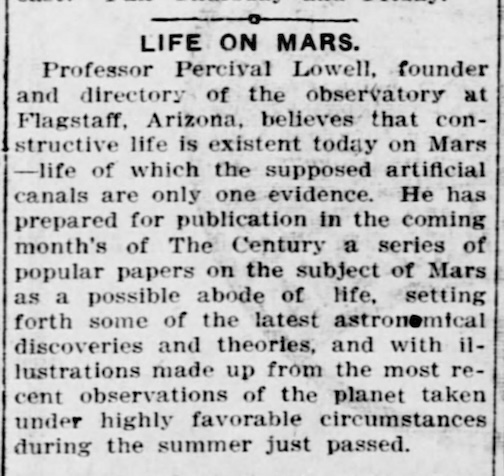
Victorian Astronomy in Arizona
During the Victorian era, astronomy experienced a renaissance, fueled by advancements in technology, a thirst for knowledge, and a growing fascination with the cosmos.
This era saw the establishment of renowned observatories in Arizona. Driven by the search for life on Mars, Percival Lowell, a wealthy and influential mathematician, founded the Lowell Observatory in Flagstaff in 1894.
“That Mars is inhabited by beings of some sort or other we may consider as certain as it is uncertain what those beings may be.” Percival Lowell, Mars and Its Canals, 1906
Lowell’s work ultimately led to the discovery of Pluto and many other achievements in astronomical discovery.
A colleague of Lowell’s, Andrew E. Douglass, assisted Lowell by scouting sites for the observatory. Though Lowell fired him over his skepticism of Lowell’s views on Mars, Douglass later went on to become the first director of the Steward Observatory University of AZ in Tucson. The Steward Observatory later boasted the first telescope built entirely with American-made parts.
Celestial Events in early 20th Century Arizona
Arizona newspapers regularly reported on opportunities to view various expected meteor showers and comets, and watching them was undoubtedly a popular pastime considering the public’s fascination with the growing field of astronomy.
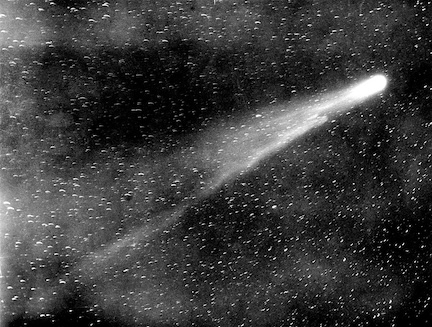
A picture of Halley’s Comet, taken June 6, 1910 at the Yerkes Observatory.
Halley’s Comet in 1910 captured the attention of the nation. Because it is a phenomenon that can be seen from Arizona for several months and only appears every 76 years, it was regularly reported on. The Arizona Republican coined stiff necks as “Comet Neck” disease.
Reports from all over the world were critical of people who feared the comet would crash into the earth or spread poison gas. One California clergyman told his congregation that Halley’s would destroy the earth, so he planned to move to Arizona. The Arizona Republican took that as a compliment that our heavenly state would survive.
People discovered other phenomena while looking up to see Halley’s Comet. In January 1910, Venus was bright enough to see one afternoon. The following month, an amateur astronomer in Phoenix claimed to discover another comet, this one tailless.
During the 1920s, the earth was affected by periods of unusual solar activity, leading to rare sightings of the Aurora Borealis in parts of Arizona. In May of 1921, Dr. Douglass of the University of Arizona reported “the most remarkable exhibition” of the Northern Lights in Arizona. Again, in 1928 people reported seeing the Aurora Borealis in Tucson and Yuma. It was not seen in Phoenix, and a meteorologist speculated the increasing presence of city lights interfered with the view. At the time, the cause of the phenomenon was not understood and was attributed to electrical disturbances.

Rosson House at night, photo credit Alan Stark, edited.
Can you imagine the night sky over Rosson House in 1895? Surely, the families who lived in the house enjoyed gazing at the Milky Way and watching meteor showers without today’s city light pollution. When the Arizona Republic announced a solar eclipse in August of 1896, did the Rossons reach for some “smoky glass” to try viewing the eclipse?
Modern Phoenix Sky
Perhaps fueled more by science fiction than the pursuit of understanding our universe, a different kind of fascination with watching the night sky occurred. One night in 1997, thousands of people throughout Arizona and neighboring states reported seeing strange lights moving through the sky in formation. The March 13 event became known as the “Phoenix Lights.” Though the lights have since been identified as military airplanes, they caused massive speculation and many were convinced that extraterrestrials were responsible. Even then-governor Fife Symington saw the lights as something that could not be explained and later called for broader investigations of UFOs by the government.
Today, Arizona State University stands at the forefront of astronomical research and education. The university’s School of Earth and Space Exploration’s contributions to NASA missions and innovative research on dark matter showcase its commitment to advancing our understanding of the cosmos.
Looking Forward: Upcoming Events and Stargazing Spots
The journey doesn’t end here! On April 8th, 2024, Arizona will witness a partial solar eclipse. Arizona Science Center will be hosting a viewing party and giving away special eclipse viewing glasses (do NOT use “smoky glass”!) – a perfect opportunity to experience this celestial phenomenon.
Here are other 2024 celestial events you won’t want to miss:
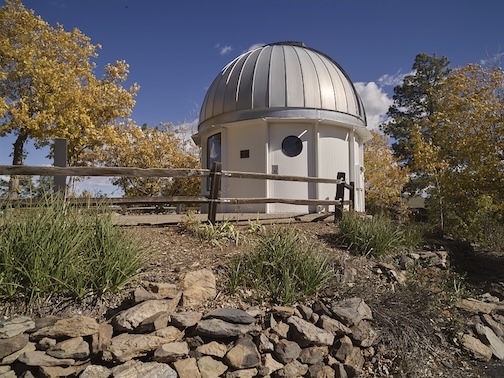
Dome of the 16-inch McAllister Telescope at Lowell Observatory in Flagstaff, Arizona. Photo credit Carol M. Highsmith, Library of Congress.
-
-
- Lyrid Meteor Shower, April 21-22
- Perseid Meteor Shower, Aug. 12-13
- Lunar Eclipse, Sept. 17
- Orionid Meteor Shower, Oct. 21-22
- Taurid Meteor Shower, Nov. 4-5
- Geminid Meteor Shower, Dec. 13-14
-
If you’re looking to delve deeper into Arizona’s astronomical wonders, consider visiting these places here in Arizona:
-
-
- Lowell Observatory: Explore the legacy of Percival Lowell and peer into the cosmos.
- Mt. Lemmon SkyCenter: Enjoy breathtaking views and state-of-the-art telescopes.
- Kitt Peak National Observatory: Witness a cluster of telescopes dedicated to unraveling the universe’s mysteries.
- Gilbert Rotary Centennial Observatory: Local telescope viewing at the Gilbert Riparian Preserve.
- Meteor Crater: Learn about meteors and the power of meteor impacts.
- International Dark Sky Discovery Center: Not yet, though! They are just breaking ground on an observatory to take advantage of Fountain Hills’ location away from light pollution.
-
Arizona’s astronomical story is one of continuous wonder and exploration. From ancient observations to modern scientific marvels, the state has played a significant role in our understanding of the universe. So next time you gaze up at the Arizona night sky, remember the rich history and ongoing scientific endeavors that connect us to the cosmos.
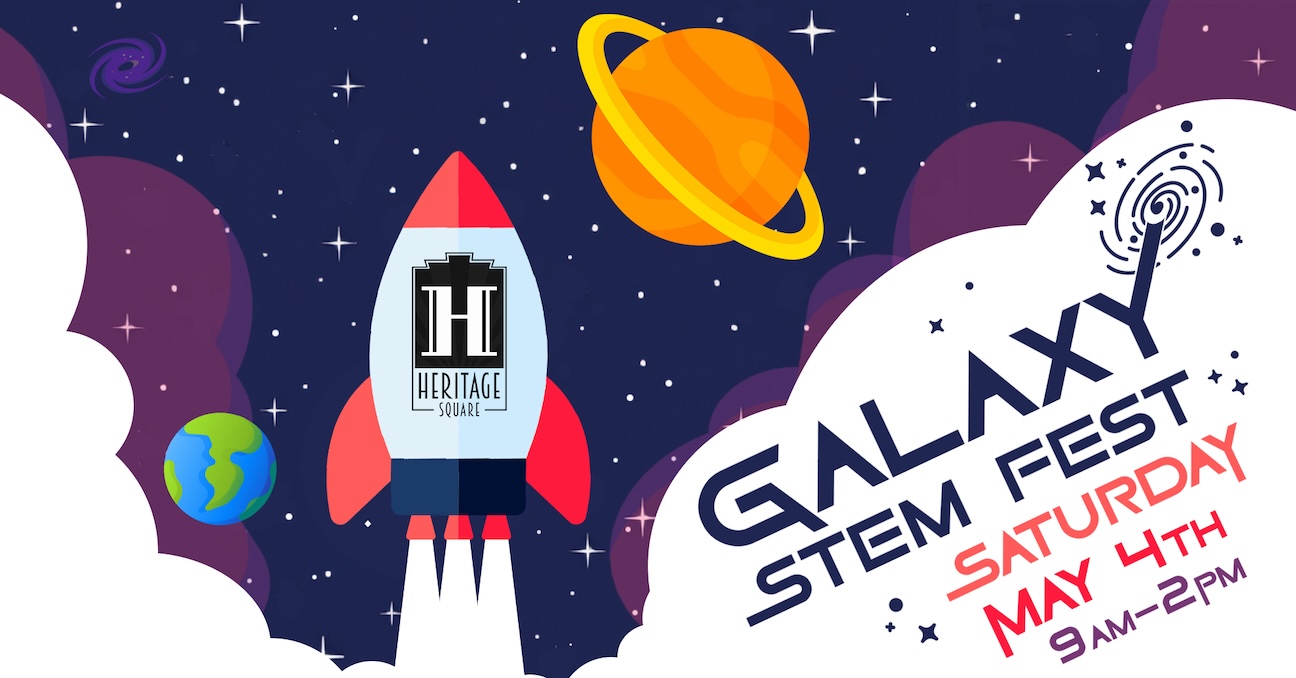
Get ready to blast off into the future at Galaxy STEM Fest!
Have fun at this FREE festival combining history, science, and art with presentations, hands-on activities, kids cosplay contest, music, food trucks, and much more! Learn more, including how to be a vendor, on our Galaxy STEM Fest webpage.
Cactus and night sky banner photo, taken by Jerry South via Pexels, edited.
Archive
-
2024
-
October (1)
-
September (1)
-
August (1)
-
July (1)
-
June (1)
-
May (1)
-
April (1)
-
March (1)
-
February (1)
-
January (1)
-
-
2023
-
December (1)
-
November (1)
-
October (1)
-
September (1)
-
August (1)
-
July (1)
-
June (1)
-
May (1)
-
April (1)
-
March (1)
-
February (1)
-
January (1)
-
-
2022
-
December (1)
-
November (1)
-
October (1)
-
September (1)
-
August (1)
-
July (1)
-
June (1)
-
May (1)
-
April (1)
-
-
2021
-
December (1)
-
November (1)
-
October (1)
-
September (1)
-
August (1)
-
July (1)
-
June (1)
-
May (1)
-
April (1)
-
March (1)
-
February (1)
-
January (1)
-
-
2020
-
December (1)
-
November (1)
-
October (1)
-
September (1)
-
August (1)
-
July (1)
-
June (1)
-
May (1)
-
April (1)
-
March (1)
-
February (1)
-
January (1)
-
-
2019
-
December (1)
-
November (1)
-
October (1)
-
September (1)
-
August (1)
-
July (1)
-
June (1)
-
May (1)
-
April (1)
-
March (1)
-
February (1)
-
January (1)
-
-
2018
-
December (1)
-
November (1)
-
October (1)
-
September (1)
-
August (1)
-
July (1)
-
May (1)
-
April (1)
-
March (1)
-
February (1)
-
January (1)
-
-
2017
-
December (1)
-
November (1)
-
October (1)
-
September (1)
-
August (1)
-
July (1)
-
June (1)
-
May (1)
-
April (1)
-
March (1)
-
February (1)
-
January (1)
-
-
2016
-
December (1)
-
-
2015
-
2014
-
July (1)
-
